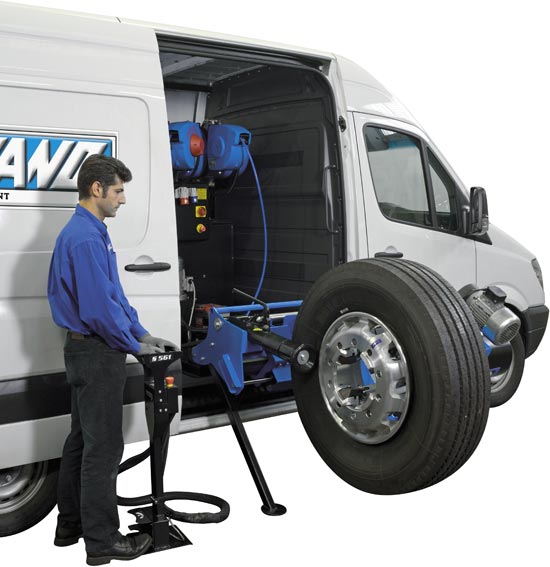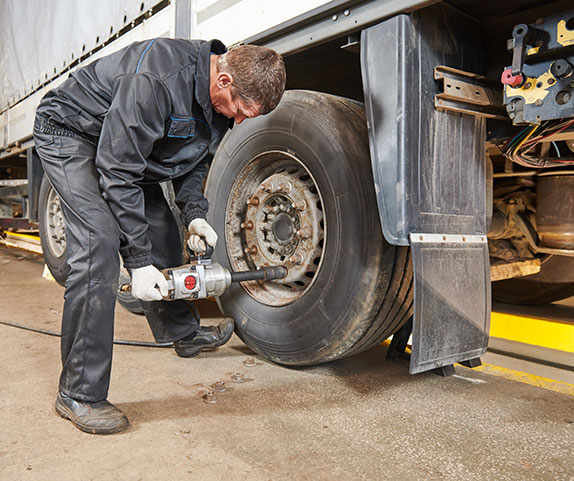Experience Precision with GMC Tire Service at Morris Tires
Experience Precision with GMC Tire Service at Morris Tires
Blog Article
Tire Solution: The Effect of Weather
When it comes to making certain optimum efficiency and safety and security on the roadway, understanding the effect of climate conditions on tire service is important. GMC Tire Service. In this conversation, we will certainly explore the complex partnership in between weather conditions and tire solution, shedding light on the value of weather-specific tire upkeep techniques and factors to consider.
Warmth and Tire Performance
When exposed to high temperature levels, tires experience adjustments in performance that can significantly affect vehicle security and handling. The warm produced from prolonged driving or heat conditions creates the tire rubber to soften, resulting in lowered tread life and enhanced wear. As the rubber becomes softer, the tire's hold when traveling diminishes, influencing stopping ranges and overall traction. In extreme situations, extreme heat can even create tire blowouts, positioning a severe safety threat to the car and its owners.

Cold Weather Effects
Cold climate problems can have a considerable impact on tire efficiency and safety and security. In chilly weather, tires may additionally lose air pressure more swiftly, which can affect handling and fuel effectiveness.
To alleviate the results of cool climate on tires, it is essential to consistently check tire pressure and inflate them to the manufacturer's recommended degrees. Making use of winter months or all-season tires developed for winter problems can additionally improve grip and grip on icy or snowy roads. Correct tire upkeep, including routine assessments for wear and damages, becomes a lot more vital throughout chillier months to make certain optimal efficiency and security.
Rainy Conditions Impact
During stormy conditions, tire performance and safety can be considerably influenced by the damp roadway surfaces and minimized presence. The step pattern of tires plays a crucial duty in maintaining grip on damp roadways. Tires with worn-out footsteps are extra susceptible to hydroplaning, where a layer of water develops in between the tire and the roadway surface, resulting in loss of traction. To combat this, vehicle drivers must on a regular basis inspect their tires for appropriate walk deepness and think about purchasing tires particularly created for damp conditions.
Additionally, stormy weather condition can likewise lower exposure, making it testing for drivers to see the road ahead plainly (GMC Tire Service). In such conditions, it is important to adjust driving speeds appropriately and keep a safe adhering to range to enable sudden stops. Properly inflated tires can also help in maintaining control on original site wet roads by offering much better handling and hold
Snow and Tire Safety And Security
Snow-covered roads position distinct difficulties for chauffeurs, highlighting the importance of appropriate tire choice and upkeep. When driving in snowy problems, having the best tires can make a substantial distinction in safety and security and performance. Winter months tires are made with unique rubber substances and step patterns to give far better grip on snow and ice compared to all-season tires. The deeper a fantastic read treads and sipes of winter season tires assist hold the road much better, reducing the danger of moving and slipping.

Additionally, drivers need to think about setting up tire chains in severe snowy problems. Tire chains give additional grip by grasping the snow and ice, enhancing security and control. However, it is necessary to adhere to producer guidelines when setting up and making use of tire chains to avoid damage to the tires and automobile. By picking the appropriate tires, maintaining correct rising cost of living, and thinking about added grip help like tire chains, drivers can enhance their safety and security when navigating snow-covered roads.
Weather-Related Tire Maintenance
When encountered with various climate condition, proper tire upkeep becomes a critical element of vehicle security and efficiency. Weather-related tire upkeep includes a variety of techniques targeted at ensuring optimum tire function and durability in different weather circumstances. One essential aspect of weather-related tire upkeep is tire pressure law. Varying temperature levels can cause tire stress to differ, influencing traction and gas effectiveness. Routinely checking and adjusting tire pressure according to producer suggestions is essential for risk-free driving in transforming weather. Furthermore, tire walk depth plays a considerable function in managing various weather condition elements. Tires with appropriate tread depth offer much better hold on damp or icy roads, minimizing the danger of hydroplaning or skidding. Evaluating tire step routinely and replacing tires when step wear gets to a particular deepness is important for preserving traction and stability in adverse weather condition. By prioritizing weather-related tire upkeep, vehicle drivers can enhance security, boost car performance, and extend the life expectancy of their tires.
Verdict
In verdict, weather problems have a substantial impact on tire efficiency and security. From warmth affecting tire stress and put on to chilly climate decreasing grip, it is essential to take into consideration the weather condition when keeping and using tires.
In this discussion, we will certainly explore the complex partnership between weather condition problems and tire solution, shedding light on the value of weather-specific tire upkeep practices and considerations.

Report this page